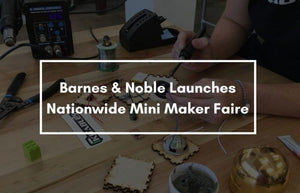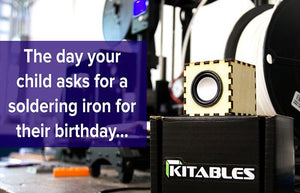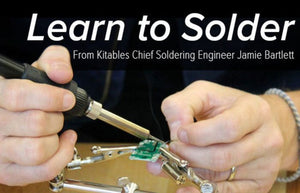How the Maker Movement Could Save the World

The maker movement is a non-official movement of builders, tinkers and do’ers. While the term “maker” has become the standard across the movement, you do not have to self-identify with the term maker to be apart of the fun. The movement is not about status or special talents or infinite wealth … it is the passion for the “DIY” build. The public perception of the maker movement consists of robotics enthusiasts who are masters of tinkering; however, the spectrum varies in people and personalities that can be considered “maker-minded.” The world we live in today was created by these maker-minds, with their innovative spirits and do’er personalities. But the maker movement is something much more than inventor culture, it’s building innovation on steroids! Technology, software and ideas are spreading like wildfire! From 3D printer objects to drones to DIY electronics, tools, microcomputers, things powered by Arduino or Raspberry Pi, and nontraditional maker items such as amateur science equipment, music instruments, vehicles, media devices, advancements in fashion accessories and more!
The maker culture of today is not about inventing things to try to achieve great wealth or building solely for the “betterment of society.” Though these can be resulting outcomes, the mindset of a maker is in the thrill of the build. Knowing that you can purchase a fully equipped drone is great, but feeling of pride and success you get from building one from scratch is incomparable.
While makers make for the thrill of making, sometimes the outcome of their projects can lead to a “unicorn,” as we call it in the tech world. The most popular mobile credit card processor in the world is Square. Square is a technology created out of TechShop, a “makerspace” in of California. Square allows businesses to accept credit card payments via any smartphone device. The technology has literally changed the way a lot of small companies do business. Using Square, the smallest of companies can now accept card payment from virtually anywhere; just 5 years ago this was considered a luxury to even the largest corporations. These makerspaces inspire innovation and creation; another “unicorn” from TechShop was the “Embrace Warmer” blanket, a high tech blanket designed for babies who still need incubators.
The importance of the maker movement extends far beyond California, or the United States; the movement affects the future of mankind. In developing nations, people have access to technology that 30 years ago would have only been available to the biggest companies in the world. Moving forward, technology and electronic components will only get smaller, faster, and most importantly, cheaper. The decrease in acquisition cost will allow people across the globe to reap the benefits of technology and spread knowledge faster than ever! However, electronic components are only electronic components. It takes a maker, a tinker, a builder to create technology that will benefit the world: taking electronic components and making usable and efficient products.
Here at Kitables, we believe that spreading the maker skill set today is like spreading the written word was thousands of years ago. Teaching someone how to build, how to tinker, how to code, could propel that person into making the next big discovery in science, technology, or even medicine.
The concept of “Accelerating Change” is the study of the rate at which technology advances. The maker movement is not only supporting the hypothesis presented decades ago but accelerating it. The number of US patent applications submitted in 2015 is 10x greater than that of 1915. If we look at the past 20 years alone, the numbers have skyrocketed.

The rapid growth of entrepreneurial spirit, access to technology, the spread of ideas via the web, and the rise of maker culture have all contributed to the rapid growth of new inventions from the late 1990’s till now. Even more powerful is how fast society is adapting and changing with this growth. Looking at the chart we can see the number of years it took from the date of invention to “mass use” status in the United States for certain pieces of technology.
It took 30 years from the invention of the radio till at least 25% of Americans owned radios.
It took 20 years from the invention of the PC till the same percentage owned a computer in their home.
And shockingly it took 15 years from the invention of the mobile phone till mass adoption.

The rise in new creations and the adaption rate decrease will allow the makers of today (and tomorrow) to be more influential, generate change, and change the world. No longer will the youth of America being completing science fair projects that are observational in nature, but instead will be making!
For more great content, view the video below of Kitables Founder and CEO Arieann DeFazio speaking at Ignite Boulder about “The Beauty of the Maker Movement.”
- Kitables.co Admin





